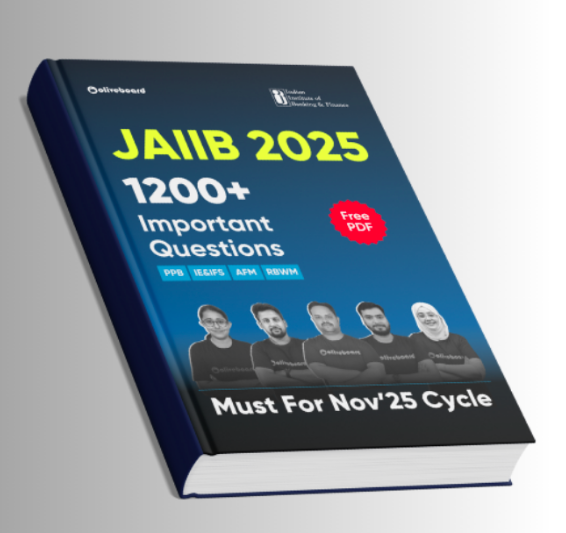
Exams


NABARD Grade A Syllabus 2024 - Complete Details

NABARD Grade A Syllabus and Exam Pattern has been released by the exam conducting authority. The syllabus and paper pattern is out on the official website of NABARD. The candidates who aim to be a NABARD officer must check out NABARD Grade A Syllabus properly. Candidates need to strategise and divide the syllabus into small parts. Finding out your own strengths and weaknesses is one of the most important preparation tasks.
NABARD Grade A Syllabus
NABARD Grade A Syllabus & NABARD Grade A Exam Pattern remain the same almost every year. This year the vacancies have been released for 17 disciplines. The selection process now involves prelims, mains, psychometric test and finally interview. Knowing the NABARD Grade A Syllabus 2024 is extremely important to bifurcate which topics can be kept at least priority.
NABARD Grade A Syllabus 2024
Both the Prelims & Mains NABARD Grade A Syllabus have been discussed in the subsections below. For a well defined preparation, it is essential to know about the topics and their sub topics.
NABARD Grade A Syllabus 2024 - Prelims
Check out the NABARD Grade A Syllabus for the qualifying sections of Prelims.
| Name of Section | Topics Asked |
| Reasoning Ability | Puzzles & Seating Arrangement Syllogism Data Sufficiency Statement Based Questions (Verbal Reasoning) Inequality Miscellaneous Questions Input - Output Blood Relations Coding - Decoding |
| Quantitative Aptitude | Data Interpretations Quadratic Equations Number Series Simplification/Approximation Data Sufficiency Arithmetic Questions Quantity Comparisons Mathematical Inequalities |
| English Language | Reading Comprehension Cloze Test Sentence Improvement Spotting the Errors Fill in the Blanks Sentence Rearrangement Para Jumbles New Pattern Questions |
| General Awareness | Questions based on Current Affairs, Banking, Economy, and Insurance. Current Affairs questions will be based on recent appointments, sports, awards, and honours, new schemes, international and national news, the latest science and technological developments. |
| Decision Making | Interpreting Information Recognizing Assumptions Situation-based question Case Studies |
| Computer Knowledge | Topics like Input - Output devices Networking DBMS MS Office Internet History of Computers & Generations Shortcuts |
NABARD Grade A Syllabus 2024 Phase 1 & 2 – ARD
The candidates must prepare for both Phase 1 & 2 simultaneously for NABARD Grade A ARD as the topics are the same but the difficulty level changes.
| Topic Name | NABARD Grade A Syllabus Detail |
| Agriculture | Definition, Meaning, and Its Branches Agronomy: Definition, Meaning, and Scope of Agronomy Classification of Field Crops Factors Affecting Crop Production Argo Climatic Zones Types of Cropping Systems and Their Definitions Problems faced if the land is dry - Seed Production & Processing, and Seed Village Meteorology: Weather Parameters, Crop-Weather Advisory Precision Farming System of Crop Intensification Organic Farming |
| Soil and Water Conservation | Major Soil Types Soil Fertility Fertilizers Soil Erosion Soil Conservation Watershed Management |
| Water Resource | Irrigation Management Types of Irrigation Sources of Irrigation Crop-Water Requirement Command Area Development Water Conservation Techniques Micro-Irrigation Irrigation Pumps Major, Medium and Minor Irrigation |
| Agri and Farm Engineering | Power and Machinery Related to Farms Power Sources on the farm - animal, human, electrical, mechanical, wind, biomass and solar, biofuels Water Harvesting Structures Farm Ponds Agro Processing Modified & controlled storage, storage of perishable foods, bins, godowns, and grain silos. |
| Horticulture & Plantation | Meaning, Definition, and Its Branches Production Technology and Agronomic practices with respect to various horticulture and plantation crops. Value and supply chain management of Horticulture & Plantation crops, Post-harvest management of the same. |
| Animal Husbandry | Farm animals and their role in the Indian economy. Animal husbandry methods in India. Commonly used terminologies pertaining to the different species of livestock. Utility classification of breeds of cattle. Introduction to common fodders and feeds, their utility, and classification. Introduction to the industry of poultry in India. Common terms pertaining to poultry production and management. Socio-Economic implications of mixed farming on the farmer in India and the concept of mixed farming. Livestock and Poultry production and their obligatory and complementary relationship with that of agricultural farming. |
| Fisheries | Fisheries Resources Exploitation and management – marine water, freshwater, and brackish water. Aquaculture- Inland and Marine Biotechnology Post-Harvest Technology Importance of fisheries in India. Common terms pertaining to fish production. |
| Forestry | Basic Concepts of Forest and Forestry Management, mensuration, and Economics regarding Forests, and the Principles of silviculture. Concepts of agroforestry, social forestry, and joint forest management. Legislation and Policies regarding forests in India, 2015 Report on the State of forests in India. Ministry of Forest, Environment, and Climate Change Ministry of Forest, Environment, and Climate Change and Recent developments under them. |
| Agriculture Extensions | Its role and importance, evaluations methods of extension programmes. KVK's (Krishi Vigyan Kendra) role in the dissemination of technologies based on Agriculture. |
| Ecology and Climate Change | Ecology and how it is relevant to man, sustainable management, and conservation of natural resources. Climate change and its causes, GHGs (Green House Gases), countries emitting high amounts of GHGs, and climate analysis. Distinguish between adaptation and mitigation. Climate change and its impact on rural livelihoods and agriculture. Carbon credit IPCC, UNFCCC, CoP meetings Funding mechanisms for climate change projects Indian government initiatives like SAPCC, NAPCC, and INDC. |
| Present Scenario of agriculture and allied activities in India | Trends of recent times Major challenges in agriculture measures to enhance. Viability of agriculture Factors of Production in Agriculture Agricultural Finance and Marketing Globalization and its impacts on Indian Agriculture and the issue of food security. Concept and Types of Farm Management. |
| Rural Development | Concept of Rural Area Structure of the Indian Rural Economy. Rural sector of India and its importance and role. Social, Demographic, and Economic characteristics of the rural economy of India. Causes of Rural Backwardness Rural population in India Occupational structure Agricultural Laborers, Handicrafts, Tribes/Forest dwellers, Farmers, Artisans, Traders, and others in the rural parts of India. Changing trends in the rural workforce and rural population in India. Problems and conditions of rural labour Issues and challenges in Hand-looms. Panchayati Raj Institutions – Functions and Working. MGNREGA, NRLM – Aajeevika, Rural Drinking water Programmes, Swachh Bharat, Rural Housing, PURA and other rural development programmes. |
NABARD Grade A Syllabus 2024 Phase 1 & 2 – ESI
For NABARD Grade A ESI as well, the topics are the same but the difficulty level changes. In Mains, you will find more difficult questions.
| Topic Name | NABARD Grade A Syllabus Detail |
| Indian Economy and Its Nature | Institutional & Structural Features Economic Underdevelopment Opening Up the Indian Economy Globalization Economic Reforms in India Privatization |
| Inflation | Various trends regarding inflation and the impacts they have on Individual Income and National Economy |
| Employment Generation & Poverty Alleviation in India | Urban & Rural Measurement of Poverty Poverty Alleviation Programmes of the Government. |
| Population Trends | Population Growth and Economic Development Population Policy in India. |
| Agriculture | Characteristics / Status Technical and Institutional changes in Indian Agriculture Agricultural performance Issues in Food Security in India Non-Institutional and Institutional Agencies in rural credit. |
| Industry | Industrial and Labour Policy Industrial Performance Regional Imbalance in India's Industrial Development Public Sector Enterprises. |
| Financial Institutions and Rural Banking in India | Reforms in the Financial Sector / Banking. |
| Economic Globalization | International Funding Institutions and their roles IMF & World Bank WTO Regional Economic Co-operation. |
| Social Structure in India | Multiculturalism Demographic Trends Urbanization and Migration Gender Issues Joint Family System Social Infrastructure Education Health and Environment. |
| Education | Status & System of Education Socio-Economic Problems Associated with Illiteracy Educational Relevance and Educational Wastage Educational Policy for India. |
| Social Justice pertaining to the various castes and classes | Problems of scheduled tribes and scheduled castes Socio-economic programmes directed towards Scheduled castes, Scheduled tribes, and Other Backward Classes. |
| Positive Discrimination or steps to favor the underprivileged classes | Social Movements Indian Political Systems Human Development Current Economic & Social Issues. |
NABARD Grade A Syllabus PDF
We have combined the NABARD Grade A Syllabus in a PDF attached below. You can download the NABARD Grade A Syllabus PDF.
Upcoming Live Classes
FAQs
The total number of vacancies for the year 2024 are 102.
Well, NABARD Grade A Notification 2024 is released on 25th July 2024.
Minimum 21 years and maximum 30 years. However, certain age relaxations are being provided to several categories.
Yes, NABARD Grade A Exam will be conducted in 2024. The phase 1 exam will be on 1st September 2024.
No, there is no such limit. The candidate just needs to fulfill the age limit and other eligibility criteria.
For the post of RDBS, the candidates will have to undergo three stages which are Prelims, Mains & Interviews.
Take a Free Mock Test now
 200 marks
200 marks
 200 Qs
200 Qs
 120 min
120 min























